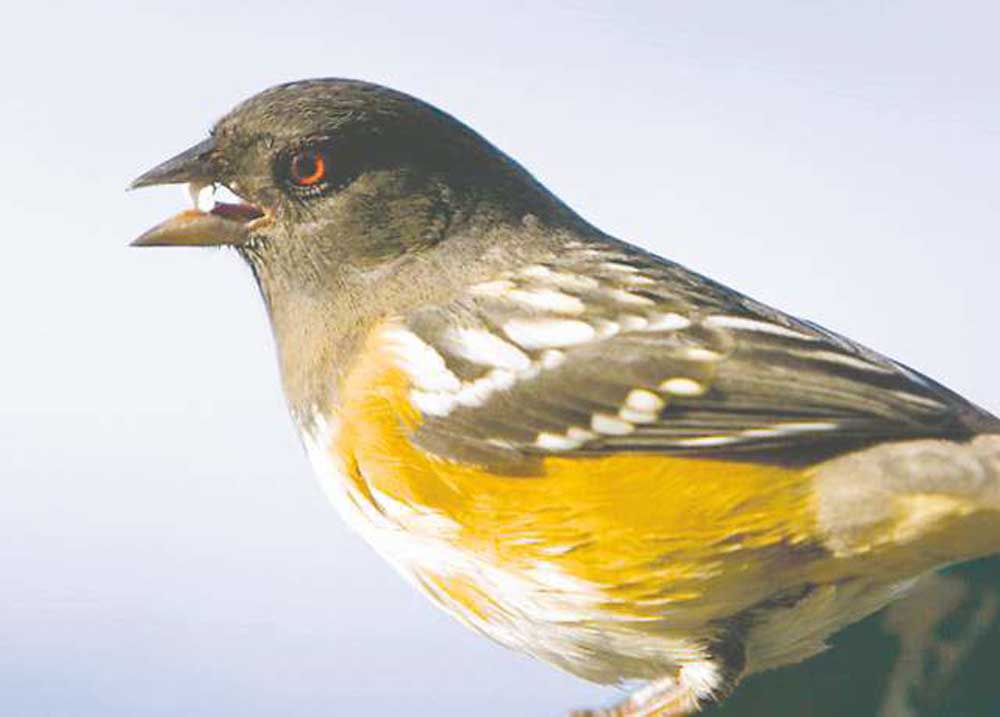Spotted towhee
Published 5:00 am Wednesday, October 9, 2013

- Spotted towhee
Scientific name: Pipilo maculatus
Characteristics: A sparrow-sized bird, this towhee has a black head, red eye and the males have a black back with white spots, hence the common name. Females are browner instead of black. The undersides have rufous colored flanks and a white belly; legs are pinkish. Adults average 7.5 inches in length.
Trending
Breeding: Builds a cup-shaped nest in low vegetation or on the ground. The female usually lays three to four eggs and incubates them for about two weeks.
Range: Once known as the rufous-sided towhee, that species was split into two different species. The western one, the spotted towhee, occurs from Canada to Central America and east to the western Great Plains, while the eastern species kept the original name.
Habitat: Prefers brushy thickets and forest edges; may be found in residential areas.
Food: Feeds on the ground using both feet to scratch the soil or litter for grasses, seeds, insects, berries or acorns; will visit backyard bird feeders, as well.
Comments: A quick glance may confuse this species with the American robin or rose-breasted grosbeak. When disturbed the towhee may run versus fly away, generally back into the thicket. The towhee’s song is a “DRINK, drink teeeee” that starts as several separate notes and ends in a rapid trill. The call note sounds like a mewing cat. Maculatus means spotted and refers to the white spots on the wings. A group of towhees is known as a teapot.
Current viewing: Throughout Central Oregon in parks, brushy areas and along rivers.
Trending
— Damian Fagan is an East Cascades Audubon Society volunteer and COCC Community Learning instructor. He can be reached at damian.fagan@hotmail.com.
Sources: Oregon Department of Wildlife Resources and “The Audubon Society Encyclopedia of North American Birds” by John Terres







